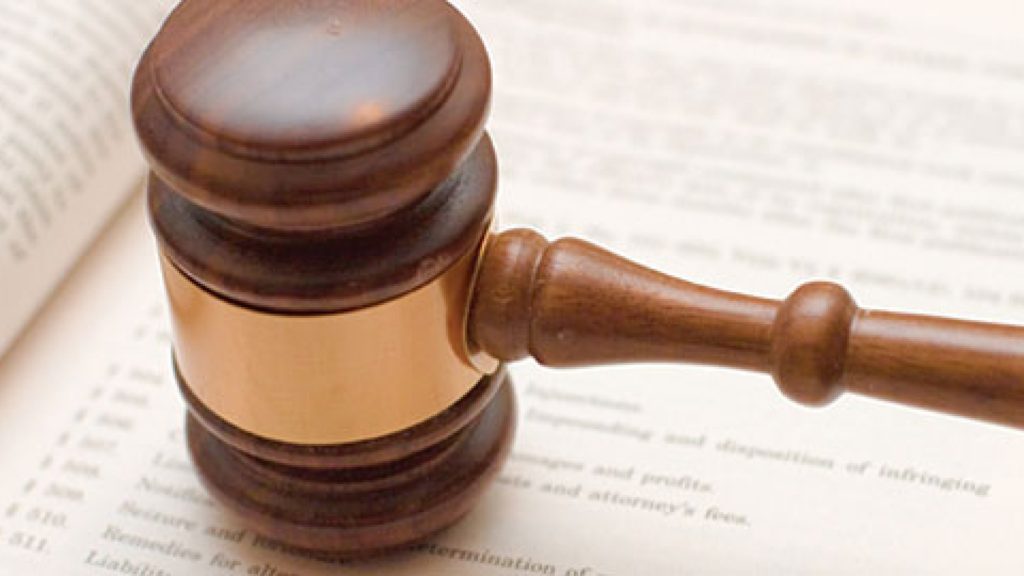
How to Protect Your Trademark From Infringement
Keeping your trademark safe from infringement requires a consistent offense and a sturdy defense. Experts explain how to master both.
Protecting your trademark is like managing a winning sports team—you need both a good offense and a good defense.
The offense starts with choosing the business name, slogan, or logo that you want to, and will be able to, protect. It involves taking the time to identify a strong trademark or servicemark that will be hard for competitors to steal.
The defense comes once you have begun using your trademark—and involves three strategies:
- Using your mark correctly
- Monitoring for potential infringements, and
- Cracking down on those who trespass on your trademark turf.
“It’s important to put time into this offensively, rather than adopting a mark that gets you into trouble and puts you on the defense,” says Sara R. Klein, an intellectual property attorney with TKlein Associates in Oakland, California, and an adjunct professor of law at John F. Kennedy University in Pleasant Hill, California.
Protecting Your Trademark: Choose a Strong Mark
When you launch a new business, service or product, pick a mark with the strongest possible legal status.
Generic terms like “hamburgers” are not protectable by trademark. Names that are descriptive—such as Speedy Bike Messengers—are potentially trademarkable, but are weak. You’d have a hard time defending them in court from a competitor who came up with a similar name.
Experts say you’ll get stronger protection with “suggestive” names—ones that indirectly and creatively convey the unique nature of your business, such as Coppertone for a suntan lotion, Pasta Pomodoro for an Italian restaurant chain, or Blu-ray for a laser disk player that uses blue-violet light.
“‘Blu-ray’ is a suggestive trademark since it makes people think of something to do with waves, rays, or light,” says Craig Albert, an intellectual property lawyer with Reitler Kailas & Rosenblatt in New York City.
The strongest level of trademark protection comes from marks that are considered “fanciful” or “arbitrary.”
Arbitrary marks are plain English words that are taken out of a completely different context, such as Apple as the name of a computer company or Blackberry as the name of a mobile phone.
Fanciful marks are names that are inherently distinctive because they’re made up. You can find them all over the pharmaceutical and technology industries—everything from Viagra and Prozac to Kodak and Verizon.
Key to choosing a good trademark is making sure that no one else is already using it. You can do a quick and easy search of registered trademarks on the web site of the U.S. Patent and Trademark Office. But that won’t show you common-law trademarks—businesses with the legal right to a name because they were the first to use it, even though they may never have registered it.
To be sure you’re not infringing on someone else’s trademark, consider spending about $1,000 for the services of a trademark search firm like Thomson CompuMark or CT Corsearch.
“They’ll do a better search than you could on your own, including look-alike and sound-alike names, common law marks, phone books, Dun & Bradstreet directories, and the web,” Albert says.
Protecting Your Trademark: Use It or Lose It
Once you’ve got a trademark—either through common-law use or registration—you need to protect it by using it.
Pay your renewal fees to the USPTO every five or 10 years as required. Also, be sure to display the sign of your trademark—a little R in a circle for federally-registered marks, TM for common-law trademarks, and SM for common-law servicemarks—on your products and marketing materials.
You don’t need to include that little TM or R every single time you mention your company’s name. But you need to display it a lot, particularly in prominent places. An example? Check out the home page of Starbucks. It has that little R right next to its mermaid logo at the top of the page. Farther down, there’s a TM next to the company’s Pike Place Roast and another R next to its VIA instant coffee.
“The big guys tend to use the little R logo about 50 percent of the time they display their registered mark,” Albert says. “Put it wherever you have a big display. The basic idea is that someone should see it if they’re reading an ad or a body of copy for your business. It’s to alert the public to what is your registered mark.”
Tsan Abrahamson, an intellectual property lawyer with Cobalt LLP in Berkeley, California, advises her clients to include trademark language on all their packaging and publications, including websites.
“We often suggest language below the fold of the Web page or on the back of publications that says, “X is a trademark or registered trademark of company Y,'” Abrahamson says.
Protecting Your Trademark: Beware the Escalator Fate
Many aspiring entrepreneurs dream of turning their brand into a household word. But watch what you wish for—if your trademark becomes the generic word for a kind of product, you could lose your ownership of it.
That was the fate of words like “escalator” (originally a trademark of Otis Elevator Co.), “zipper” (B.F. Goodrich), “aspirin,” and even “heroin” (both Bayer AG). Today companies like Kleenex and Xerox struggle to avoid such a fate through marketing campaigns aimed at reminding the public that they are a brand, not a product category.
“The company most notorious for making sure you don’t genericize their mark is Xerox, which insists that people use a Xerox copy machine, they don’t ‘make a Xerox,'” says Albert.
This kind of “household word” problem isn’t likely to become an issue for most small businesses. But you can forestall the possibility of trouble down the line by using your trademark as an adjective rather than a noun.
“You don’t want to say ‘Buy Rollerblades,'” Abrahamson said. “Instead, say ‘Buy Rollerblade in-line skates.'”
Protecting Your Trademark: Police Your Mark
It’s best to consistently monitor other companies’ use of phrases or images similar to yours so you can nip any trademark infringements in the bud.
Some monitoring will likely happen naturally in the daily course of business as you watch what your competitors are doing. “If you’re a small business, keep your eyes open for things that might confuse consumers about your mark,” says Klein.
You can also check for infringements yourself with Google Alerts or other search engines. Instruct Google Alerts to notify you on an ongoing basis about news stories and web sites that mention your trademark, misspelled versions of your trademark, and phrases similar to your trademark.
“A business called Newark Pizza Kitchen might be looking for misspellings of Newark or names like Jersey Pizza Kitchen,” says Albert.
Meanwhile, trademark search firms like Thomson CompuMark provide an even more comprehensive monitoring service for as little as $500 per year, according to Abrahamson.
“They’ll police both domestic and international trademark registrations as well as domain registrations, and alert you to companies using marks that are similar or identical to yours,” she says.
Dig Deeper: How to Protect Your Invention
Protecting Your Trademark: Enforce your Mark
If you find a possible infringement, you’ll need to decide whether to go after the violator—and how aggressively to do so. This should partly depend on the strength of your trademark and thus the likelihood of winning your case. For most small businesses, it’s also a matter of budget and resources.
Abrahamson recommends developing a hierarchy of which kinds of violations are most threatening to your business—and doing this long before you actually run into any conflicts.
“Let go of those things you can let go of,” she advises. “Say you have a restaurant called Sally’s Roadhouse and you see someone selling Sally’s Jelly to grocery stores. Think about whether you are ever going to be a restaurant like Trader Vic’s that sells salad dressings, or if you’re someone who is never going to sell to stores.”
When you need to enforce your mark, have your lawyer draft a cease-and-desist letter. Even here, you have choices about tone—how severe or how open to compromise.
“If a client says, ‘I just don’t have the money to sue them,’ that will inform the manner in which we write the letter,” Abrahamson says. “We’ll ask (the infringer) to stop, but we’ll be ready to live with a coexistence agreement, such as an agreement that they won’t go into our client’s geographic area.”
If you let infringements of your trademark continue without any response at all, you risk losing the legal right to that mark.
“You have to follow up to make sure some action is taken,” says Albert. “If you don’t take it seriously, the courts won’t take it seriously.”
Dig Deeper: How to File for a Patent
Original document, How to Protect Your Trademark From Infringement
Source:https: INC
Adapted for Academy.Warriorrising

